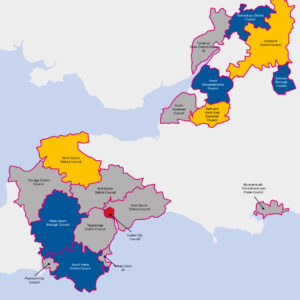Yesterday, scientists in the USA declared that they had traced the worst day on Earth which took place 66 million years ago when a 12km-wide rock smashed into the planet. Whilst perhaps more understated, the West of England Joint Spatial Plan Inspectors’ ‘second letter’ hit the doormats of our four local councils and left a crater in the landscape of plans to build over 100,000 homes in our city region.
Four years of intense technical work coupled with a Public Examination has created 13 pages of explanation and boils down to a single sentence: “Whilst we recognise that the Councils’ preference might be to continue with the examination if at all possible…we remain of the view that withdrawal of the plan from examination is likely to be the most appropriate option.”
If the ‘first letter’ from the Inspectors in August represented a small rock falling from the sky, the ‘second letter’ represents a gigantic asteroid. The scale of modifications that might be needed to resolve the Inspectors’ concerns appear to be too great for the four councils to crack some boulders and reform a new plan.
Lack of Government support?
Given the fact this type of sub-regional planning is a new age of policy-making driven by Government and Whitehall, the councils may have expected some intervention to at least soften the blow and give the process a chance.
It appears that no intervention will be made. Key factors have moved against government action. The obvious is the distraction of Brexit – so many Ministers have come and gone, the original Secretary of State who introduced this new type of spatial planning for the country was Greg Clark in 2015.
But key local MPs in longstanding opposition to the JSP and its strategic development locations have been promoted to new influential posts; Jacob Rees-Mogg into Cabinet and, perhaps less seismic or detectable, Luke Hall who was appointed Parliamentary Under-Secretary for Housing, Communities and Local Government in July 2019.
Post-impact: what next for the West of England?
While the four councils are being invited to respond to the Inspectors’ letter, two possible options are starting to form. First, when the JSP debris has cleared, the councils issue, in effect, a statement of common ground agreeing what housing numbers should go where. Through the Local Plan, they develop their own development locations to be tested individually at Examination. An upside would be that the politicians could look afresh at proposed detailed site locations, particularly where there are new administrations formed from May 2019 who wish to better reflect their mandates. The new process could move quickly and decisively.
Second, and more radically, the WECA Mayor Tim Bowles could produce his own Spatial Plan. But this is based upon two gigantic assumptions – one, that North Somerset Council and the ‘IndLabLibGreen’ coalition agree to co-operate with a view to joining WECA in 2021 (currently, they are outside); two, that Mayor Bowles would want to when not obliged at this point and generate controversy in the lead-up to his re-election campaign for May 2021.
No doubt further options could arise in the coming months.
When the rocks, water and dust cleared all those millions of years ago, it took time for the world to settle and become something new. While the pace will not be so glacial in the West of England in 2019, it may still take time for the true shape and future of our communities to become clear.


